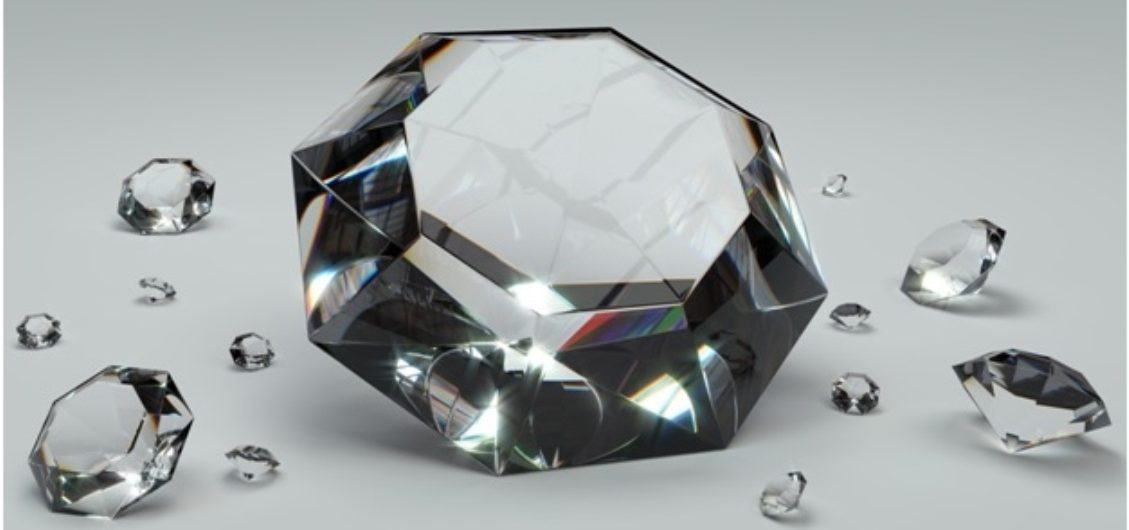Buying old cut diamonds can be a tricky process. That’s because many of the stones are recycled from older items of jewellery. High clarity, larger diamonds may be cut up into modern brilliant cuts for a higher price, and there may be a scarcity for old cut diamonds.
But, what exactly are old cut diamonds?
The Features and Characteristics of Old Cut Diamonds
Old cut diamonds refer to many diamonds cut prior to the eighteenth century. Before the process of bruting was introduced, most diamonds assumed a square shape, looking very similar to today’s cushion cut diamonds. See diamond rings in Wellington, for example.
Back then, diamonds boasted a polished cutlet and were much deeper than today’s cuts. Old European cuts had a much rounder shape. Some old cut diamonds are referred to as a Victorian cut. They are easily identified by their tell-tale features, which include:
- Small table – the diamond’s upper facet is quite small and high
- Deeply cut proportions – old cut diamonds seem thicker than today’s round brilliants
- Polished cutlet – the bottom facet of the diamond’s underside is polished flat
A Look at Larger Old Cut Diamonds
There are plenty of possibilities for old cut diamonds, especially when it comes to larger diamonds of more than one carat in weight. Often, diamond traders choose to send these diamonds for re-cutting into a more modern, brilliant cut stone. This is usually done to improve the proportions, the way the diamond handles light and it also increases the value of the diamond.
Now, for Some of the Basics
We should note that there are three main types of old cut diamonds: old European cut, old Mine Cut and Rose cut.
The old mine cut dates way back to the 1700s and was popular during the Victorian and Georgian eras, especially, right up until the turn of the century. These diamonds boasted a cushion or off-round shape, with a high crown, deep pavilion, small table and large, flat cutlet.
The old mine cut later evolved into the old European cut, which is circular in shape with a very small table, heavy crown, deep proportions and large, flat cutlet. It is a direct predecessor of what we know as the modern round brilliant cut. This old cut has 58 facets and dates back to the 1800s, and it was mostly popular during the Edwardian, Art Nouveau and Victorian periods up until the 1950s.
What About Symmetry?
Since old cut diamonds were all hand-cut, they usually lack the symmetrical precision that we expect of today’s modern cuts. It’s not unusual, at all, for an old cut diamond to have a few irregularities in shape as well as in the alignment of its facets.
If you are considering investing in old cut diamonds, take heed: avoid those stones that are too deep since they will appear far too small for their weight. Also, avoid those old cuts that have been drilled, enhanced or girdle-polished during repair. Overall, these diamonds make for a unique, gorgeous addition to any piece of jewellery.
Image by ColiN00B via Pixabay
Latest Posts:
- Neha Dhupia In Payal Khandwala Maxi Dress: Yay Or Nay?
- Looking Pretty: Khushi Kapoor In Mayyur Girotra Outfit
- Benefits Of Rice Bran Oil For Skin Whitening
- Interiors: Make Home A Lifestyle
- Jumpsuiting: Diana Penty In Abraham Thakore
- Keeping It Casual: Shilpa Shetty In Cover Story
- Sonakshi Sinha In Grassroot By Anita Dongre
- Taapsee Pannu In Urvashi Joneja Dress At A NDTV Event: Yay Or Nay?
- Madhuri Dixit Is An Epitome Of Grace And Here Is The Proof
- Shraddha Kapoor Looking Stunning In Aisha Rao Separates
- Best Ways To Get Rid Of Darker Underarms





